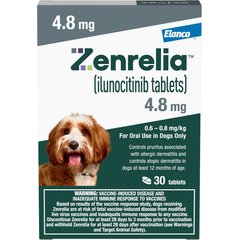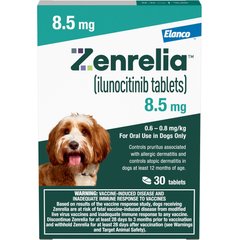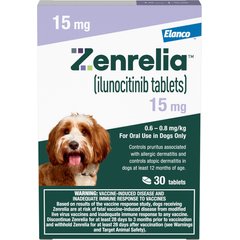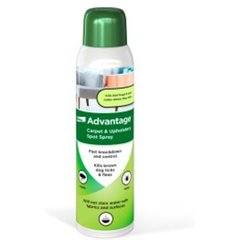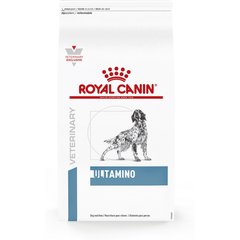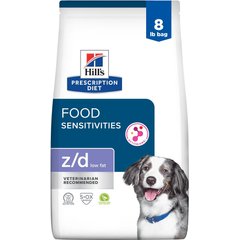Allergies in Dogs: Symptoms, Causes, and Treatment
alexei_tm/iStock / Getty Images Plus via Getty Images
Does your dog scratch, chew, or lick themselves excessively? If so, these are all dog allergy symptoms.
Allergies are common in dogs—in fact, they are one of the most common reasons for veterinary appointments. Dog allergy symptoms most commonly affect the skin and ears.
While humans sometimes outgrow allergies, allergies in dogs tend to worsen as they get older.
So, how do you know if your dog has allergies, and what’s causing them? What’s the best allergy treatment for dogs?
Here’s everything you need to know about dog allergy symptoms and what you can do to help your pup.
Key Takeaways
- Dog allergies are one of the most common reasons for veterinary appointments.
- There are several types of allergies in dogs.
- Your veterinarian is your best source for determining the cause of your dog’s allergies and determining a treatment plan.
Dog Allergy Symptoms
Common dog allergy symptoms may include:
-
Itchy skin
-
Excessive scratching and licking of self
-
Excessively rubbing the face, like on the floor or furniture
-
Recurrent skin and ear infections
-
Gastrointestinal (GI) signs, such as loose stools or vomiting
The type and severity of these signs depend partly on the type of allergy your dog has.
Types of Allergies in Dogs
There are several types of allergies in dogs. Let’s look at a few common ones.
Seasonal/Environmental Allergies
Also known as atopy, seasonal or environmental allergies are caused by substances that exist in your home, backyard, and anywhere else your dog spends time.
These allergens can be inhaled, as with pollen, or absorbed through the skin when your dog touches them. Common triggers (allergens) for these allergic reactions include:
-
Pollens
-
Plant or animal fibers
-
Mold spores
Some environmental allergies—such as allergies to certain pollens—may occur seasonally. Other environmental allergies, like allergies to dust mites, may occur year round.
Flea Allergies
An allergy to fleas is the most common skin disease in dogs.
The bite of just one or two fleas per week is enough to make affected dogs itch. Proteins in flea saliva are believed to be the allergens that cause the itchiness.
With flea allergies, you may or may not see live fleas on your dog. You may also notice black dots that looks like coffee grounds at the base of your dog’s fur. These black dots are flea dirt, or flea excrement, and contain digested blood.
Food Allergies
Dogs can develop an allergy to a particular food at any point during their life.
Most commonly, the allergy is to a specific ingredient in the food.
The most common food allergy in dogs is to a protein source in their diet, like chicken or beef. While allergies to grains or other ingredients can occur, they aren’t common.
Dog Allergy Treatment
Treatment for allergies in dogs depends on what your vet determines your pup is allergic to. Here are a few examples of how your vet might approach treating your dog’s allergies.
Treatment for Environmental Allergies in Dogs
Treatments for seasonal allergies in dogs can include:
-
Oral medications, such as antihistamines or Zenrelia. One daily dose of Zenrelia can quickly relieve a dog’s itch.
-
Injectable medications, such as Cytopoint
-
Fatty acids
-
Steroids
-
Frequent bathing and other topical therapies, such as sprays, wipes, or a mousse
Steroids should not be used long-term in the management of allergies due to the risk of significant side effects.
If an allergy test has been performed, then the ideal allergy treatment for dogs is avoidance of the allergen. This is possible in a few, select circumstances, but most dogs are allergic to a variety of substances that can be difficult to avoid completely.
Treatment for Flea Allergies
Treatment for flea allergy dermatitis in dogs is aimed at reducing the symptoms of itchy skin and irritation until the fleas are gone. To eliminate allergy symptoms in a flea-allergic dog, strict flea control is required.
There are many highly effective flea control products and medications available.
Some are topical and come in the form of a liquid that you squeeze onto your dog’s skin, such as Revolution or Bravecto.
Others are given orally in the form of chews, such as Credelio Quattro.
If your dog needs rapid relief from live fleas, Capstar (nitenpyram) may be recommended.
Consult with your veterinarian to determine your best option for your pup and their individual symptoms.
Oral preventives may take effect more quickly than topical medications but use caution—some of these have flavorings your dog might be allergic to.
In severe cases, a dog’s environment must be treated for fleas as well. Vacuum thoroughly to remove eggs, larvae, and pupae, and discard the vacuum bag.
You can use insecticides inside and outside your home to treat all flea life stages.
Other animals in the home should also be treated for fleas.
It’s important to use an insecticide containing an insect growth regulator—such as methoprene or pyriproxyfen—to halt the development of flea eggs and larvae. Advantage Carpet & Upholstery Spot Spray and Advantage Topical & Indoor Flea & Tick Spray for Dogs are two options to treat your furniture and carpets in the event of a flea infestation.
You can hire a professional exterminator, but you should specify that the treatment is for fleas.
Treatment for Food Allergies
To diagnose a food allergy in dogs, a hypoallergenic dog food is recommended for eight to 12 weeks.
During the feeding trial, dogs can't eat any other foods, including treats, human foods, or flavored medicines. This is the only way to determine if your dog has a food allergy.
Hypoallergenic diets either have limited ingredients with an uncommon protein source or are processed in a special way (hydrolyzed) to be less likely to cause allergic reactions.
The concept is that a dog can’t be allergic to a food that they have not been exposed to before. If it’s determined that your pet has a food allergy, your veterinarian may recommend keeping your dog on the allergy diet long term.
Consult your veterinarian when choosing the proper diet. Over-the-counter foods are not recommended for a proper food trial. Other allergy treatments for dogs can be helpful when reducing the symptoms while waiting to see if the diet change is helpful.
However, use of certain medications can interfere with food trials—it can be difficult to determine if improvement is due to the food or the medication.
Always consult with your vet before giving your pup any medication.
Other treatment can include allergy vaccines—also known as immunotherapy—which is can be given either by injection under the skin or by mouth.
The goal of immunotherapy is to make the immune system less reactive to the allergy-causing substances.
The success rate of immunotherapy is 60–70%.
This is the best long-term approach to allergy control, especially in younger pets that experience symptoms most of the year.
Treatment for allergies in dogs depends on what your vet determines your pup is allergic to.
Symptomatic treatment can and should be given while starting immunotherapy. It may be many months before any improvement in symptoms is seen from immunotherapy alone.
If immunotherapy is not an option for your pet, anti-itch medications like Zenrelia can usually be given long-term.
These medications can have a major impact on your dog’s quality of life.
Whether your dog’s allergies are to fleas, environmental allergens, or specific food ingredients, your dog deserves relief from the itch.
Your veterinarian is your best source for determining the cause of your dog’s allergies and determining a treatment plan.
Allergies in Dogs FAQs
What are common dog allergens?
Common allergens include proteins in flea saliva, certain environmental allergens like pollens or molds, and specific ingredients in foods like chicken or beef.
Is there an allergy test for dogs?
For environmental allergies, the best test is an intradermal allergen test (IDAT), which is a skin test.
For food allergies, a strict dietary trial on a hypoallergenic food is the best test. Blood tests are not reliable for diagnosing allergies in dogs.
Are there home remedies for dog allergies?
If your dog has environmental allergies, you can help reduce incidence through home management, such as changing air filters, frequent vacuuming, and keeping windows closed.
Some pet parents wipe their dog’s paws when they come in from being outside.
However—in collaboration with your vet—it’s important to understand what your dog is allergic to so you can ensure you’re targeting the right allergen.

